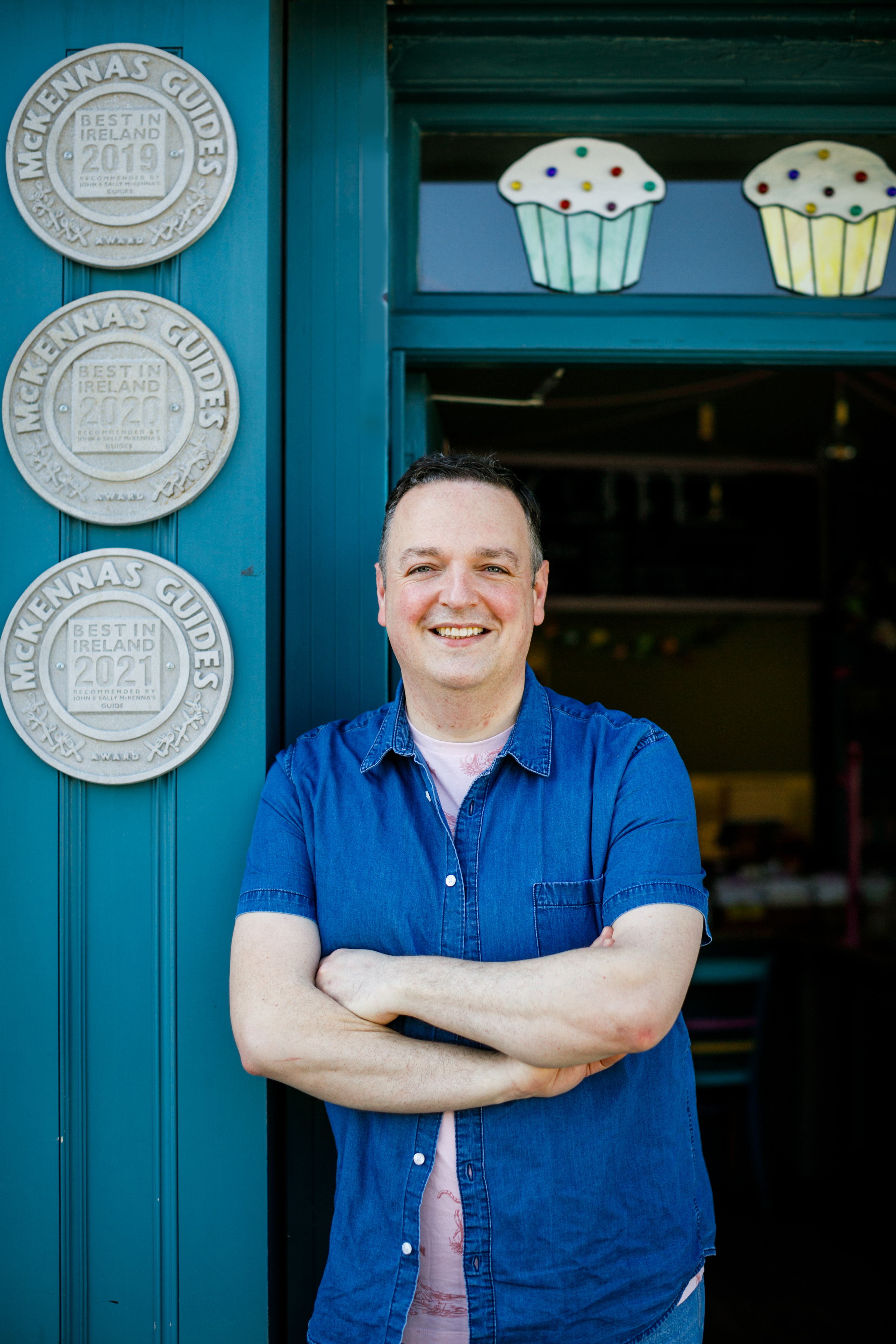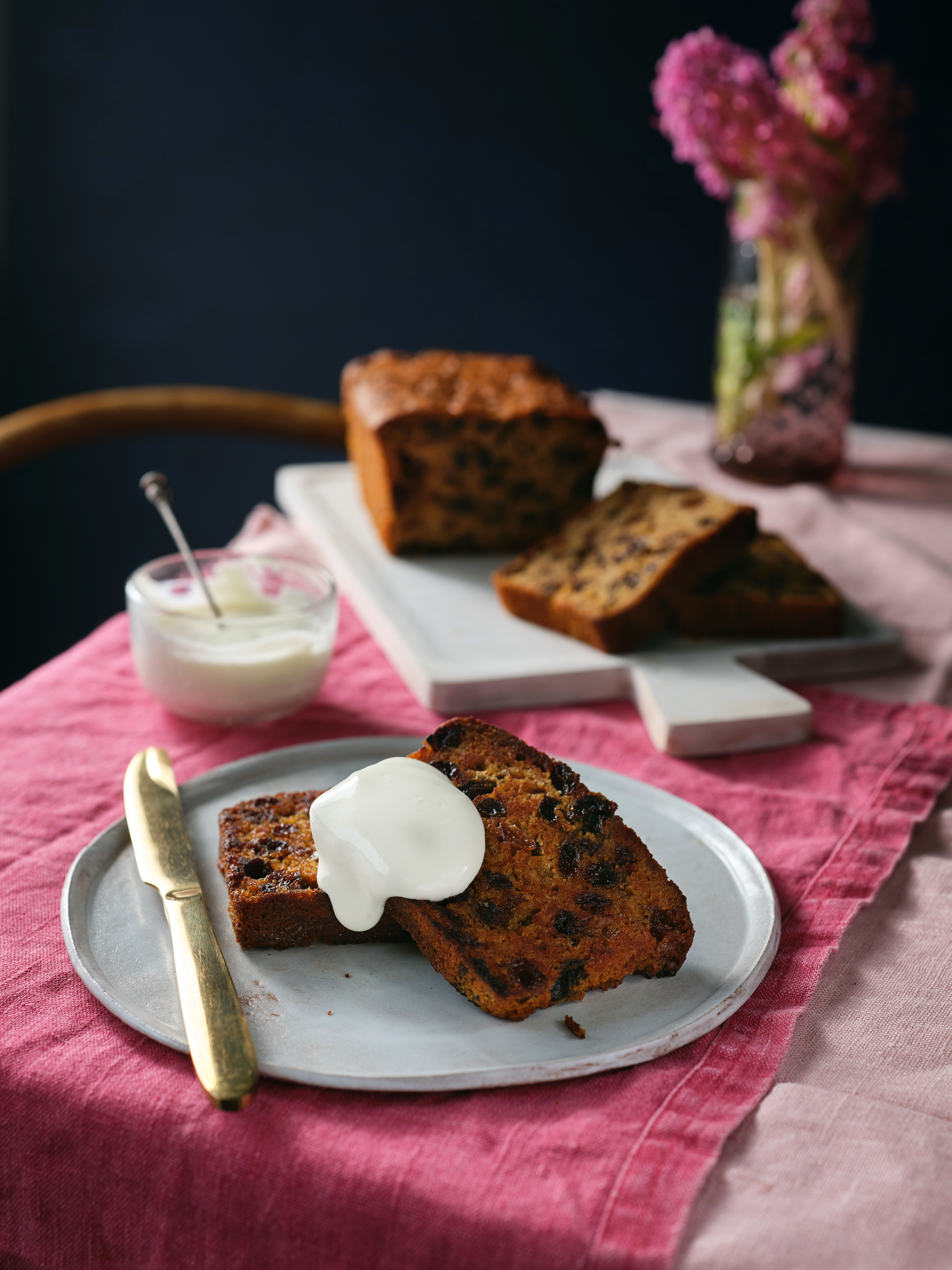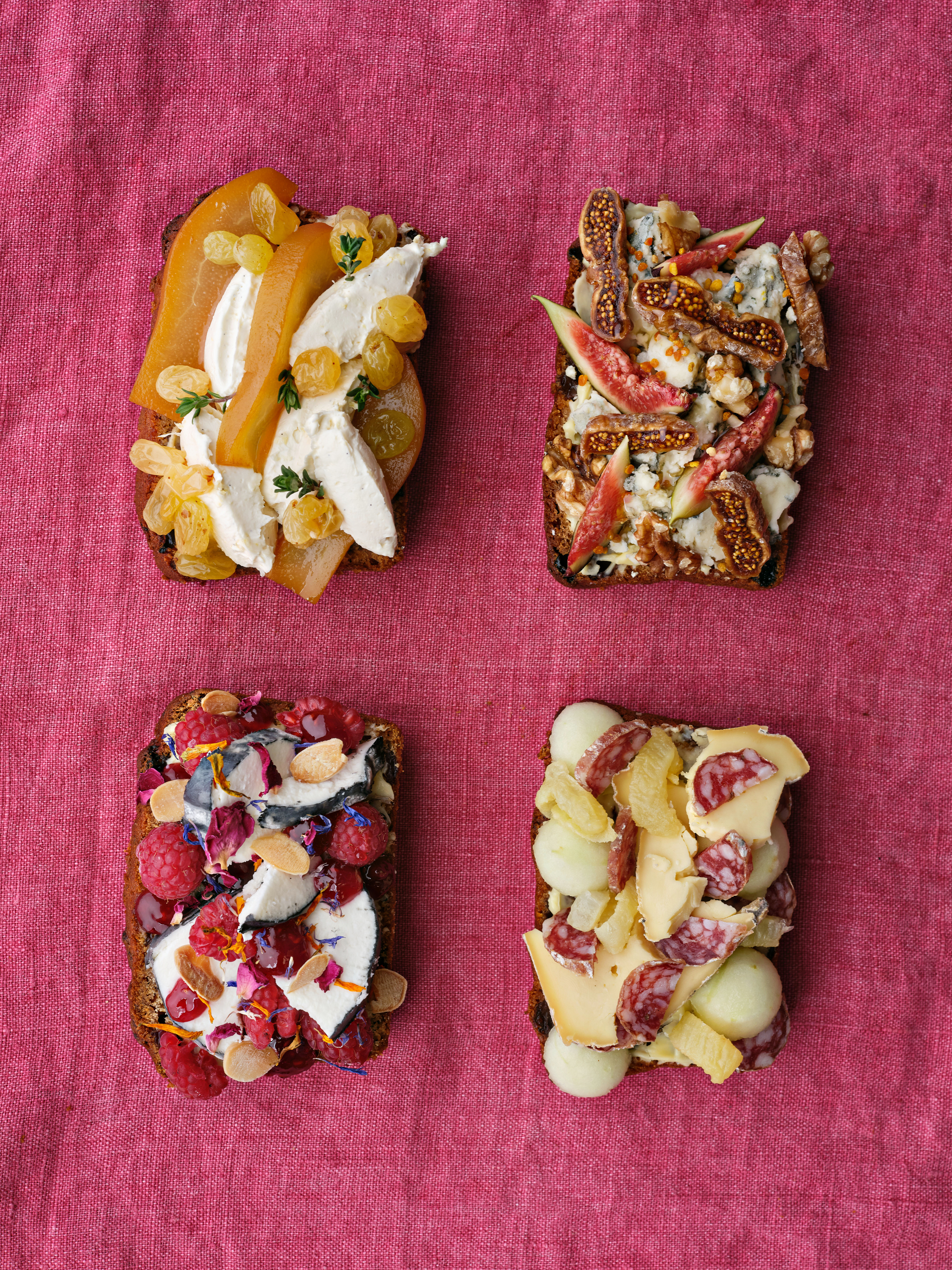The History of Ireland’s Spooky Halloween Treat, Barmbrack
Brack-obsessed baker Graham Herterich is putting the spotlight back on Ireland’s beloved fruit loaf, with tradition and innovation blending to create some fantastic new flavours. Now is the season to try it

Graham Herterich
Of all the traditional Irish foods associated with Halloween, brack is one of the most beloved and enduring. It’s also hugely versatile, as professional baker, food writer and self-confessed brack-obsessive Graham Herterich has shown.
In his 2022 cookbook, Bake: Traditional Irish Baking with Modern Twists, Herterich dedicates one chapter to “Brack and Butter”, where he dives into traditional and modern variations for baking and serving these sweet, speckled delights. No surprise then that when his new County Kildare café, Ernie’s, opens this October in Athy’s Shackleton Experience visitor centre, there will be a bespoke “Explorer’s Brack” sold exclusively onsite.
Tracing the origins
The name brack, Herterich explains, comes from the Irish word “breac” (meaning “speckled”), which refers to the dried fruit dotted through the dough for each traditional variation. For a tea brack, the fruit is soaked in lukewarm tea, and the cake is leavened by self-raising flour. Barmbrack, which is associated with Halloween, is, by contrast, what Herterich describes as a “sweetened yeast bread”. “Traditional barmbrack would have used the ‘barm' from beer production”, he explains – barm being a yeast-rich foam formed on fermenting ale.
Herterich’s barmback recipe is very traditional. “I use strong white flour, caster sugar, butter (to enrich the dough), dried yeast, mixed spice, a little salt, half water and half milk (again to enrich the dough), egg and dried fruit, and then I brush the top with marmalade to give it a nice glaze.”
Herterich grew up in Athy, but it was his Granny Flynn from County Carlow who first introduced him to brack. “One of my earliest memories of barmbrack is her bringing it from Crotty’s Bakery on Tallow Street in Carlow,” he reminisces. “We always had it toasted, and it was light and fluffy yet somehow dense as well.”

Traditional tea brack
Unlocking the charms
Commonly made at Halloween, barmbrack traditionally had up to six charms hidden in it, some less welcome than others.
“If you found a dried pea in your slice of brack, it was a sign that you weren’t going to get married within the year,” Herterich explains. “A matchstick would mean an unhappy marriage, and a piece of cloth meant bad luck or poor health.
“Now we get on to the nice things! A gold coin meant you were going to have good fortune, a ring meant you were going to be wed within the year, and if you found a dried bean, it was good fortune but without any wealth.”
Today, shop-bought Halloween barmbracks still contain a ring in them. “We see that as a sign of good fortune, where the lucky person wins it.”
Tea brack, however, was a simpler, more everyday home-baked treat, and one that Herterich’s Granny Flynn taught him to make at a young age.
“I remember we were sitting in her kitchen after having our tea [a light evening meal]. She had a pot of tea left over, and she said, ‘I’m not wasting that tea’. I remember her with her hands on the pot, saying ‘that tea is the perfect temperature, it’s not fresh boiled and it’s not gone cold’. So she took out her dried fruit and mixed peel to soak it, and she said, ‘We’ll finish that tomorrow’.”
The next day, at her marbled blue Formica kitchen table, Granny Flynn got out her Mason Cash ceramic mixing bowl and quickly mixed the all-in-one recipe together, adding the flour and eggs to the soaked fruit and pouring it into a tin. “And that’s it – it’s so simple.”
A passion made real
As a kid, Herterich learned that the best way to eat any brack, whether freshly sliced or toasted, was loaded with golden Irish butter. “You should be able to see your teeth marks in the butter. That’s the number one rule!”
Later, as an adult, having trained as a chef before opening The Bakery in Dublin 7, Herterich discovered the versatility of tea brack as a vehicle for toppings from strong cheeses to seasonal fruits.
His playful approach to tea brack began by reimagining the base recipe, initially swapping out the black tea for Earl Grey, and adding cranberry for sharpness and orange zest to emphasise the Earl Grey’s bergamot flavours.
Since then, he has experimented with endless variations, using fruit teas or even coffee for a brack that now has a cult following at The Bakery, his shop in Rialto, Dublin, and which makes an appearance in his Bake cookbook. “I drop the mixed peel but add pecans, dates and chocolate, and lots of rich stuff which really works with the coffee.”
At certain times of the year, The Bakery runs a popular Brack Club which entails a monthly postal delivery over three or six months of a surprise brack. Herterich uses it to experiment with creative ideas such as a white chocolate and strawberry brack with Prosecco-soaked fruit. Some, like his cherry and almond brack, become regulars in the shop by popular demand.

Herterich's dressed brack's
Seasonal flavours
The Bakery now has up to a dozen bracks that rotate seasonally. “The traditional one is always there, with others coming and going.” In summer months, a light and summery lemon and ginger brack features half sultanas and half golden raisins. In the colder months, Herterich recommends his fig and walnut brack topped with a strong cheese and served with a glass of port.
Herterich loves dressing brack creatively, for a luxurious snack or creative cheese courses. “It’s such a great carrier for flavour, especially for strong cheeses.” Favourite toppings include St Tola goats cheese with raspberries and toasted almonds; Cashel Blue cheese with figs and walnut drizzled with honey; or chicken liver parfait and vermouth-soaked oranges, served with Valentia Island Vermouth on ice, and a slice of orange to garnish.
At Athy’s brand new cafe and retail space, in pride of place, you’ll find Ernie’s Explorer Brack inspired by Ernest Shackleton’s globe-trotting adventures. It features some of Herterich’s favourite spices from around the world, including "crystallised ginger and star anise and cinnamon and really good vanilla from Madagascar”.
How you choose to top it is entirely between you and your imagination.
See thecupcakebloke.com and shackletonmuseum.com for more information.
Bake: Traditional Irish Baking with Modern Twists (€25) is available from ninebeanrowsbooks.com and good bookshops.
